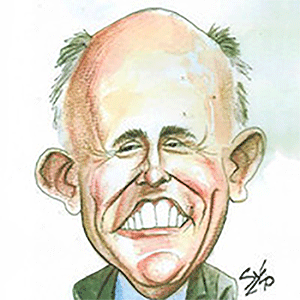Here's why US electric vehicle infrastructure has tripled in 5 years, and where it's most common
Published in Slideshow World
Subscribe
Here's why US electric vehicle infrastructure has tripled in 5 years, and where it's most common
Car buyers weary of electric vehicles often share the same concern: "What if I run out of juice and there's nowhere to charge my car?"
That was a fair question in 2007. At the time, there were only 139 public EV charging stations. But in the years since, public and private entities have invested billions into building out charging infrastructure to make EVs a more practical option.
As of 2023, there are over 64,000 public EV charging stations across the U.S.—more than twice the number in 2020 and three times the number in 2018. Some areas have particularly high concentrations of stations, including in the California Bay Area and Seattle metro, where EVs are more popular than in many other parts of the country.
To provide a broader picture of U.S. electric vehicle charging infrastructure, Truck Parking Club tapped into the Department of Energy's Alternative Fuels Data Center and White House investments data to chart its considerable expansion.
EV infrastructure has expanded under the Biden administration, with recent funding continuing to enhance EV adoption spurred by funds allocated in the 2021 Bipartisan Infrastructure Law and 2022 Inflation Reduction Act. However, President-elect Donald Trump has vowed to roll back clean-energy initiatives, including the $7,500 tax credit for Americans buying EVs. It's unclear whether the president-elect would cut infrastructure expansion funds.
Visit thestacker.com for similar lists and stories.
EV infrastructure grows exponentially
While most EV owners will predominantly charge their vehicles at home, public charging can save them in a pinch. At the same time, the presence of public chargers generates positive opinions of EVs among those who live nearby, Pew Research polling shows.
The biggest year for new public EV stations was 2021, when more than 17,700 public stations were added to the national footprint. That was the same year the Bipartisan Infrastructure Law provided $7.5 billion for states and communities to build out their charging infrastructure. However, the first BIL-funded EV charger didn't break ground until 2023, Politico reports.
Currently, much of the U.S. public EV infrastructure is privately owned—largely by EV market leader Tesla. Of EV stations mapped in the alternative fuels database, most didn't have owner information. Those that did mostly listed private ownership. Of 22,000 public fast chargers in the U.S. in 2022, nearly 3 in 5 were Tesla superchargers, according to the International Energy Agency's 2022 Global EV outlook.
EV companies have incentive to build out public infrastructure, as accessibility is a major draw for potential customers. Despite a slow start to government projects, other federal efforts have incentivized these expansions, such as IRA-funded tax credits for individuals and businesses to install EV chargers in certain areas.
Mapping public EV charging
A majority of counties in the U.S. host public EV charging—a huge feat for a relatively new phenomenon. Several counties even boast over 1,000 public stations, including a few in California and the most populous counties in Washington and Massachusetts.
About 64% of Americans live within 2 miles of a public charging station, according to Pew. These individuals are more likely to own an electric or hybrid vehicle, consider buying one, and favor phasing out new gasoline car production—even when accounting for partisanship or community type, its research shows.
Still, substantial gaps remain in EV charging access, which both reflects and reinforces EV hesitancy. Pew Research data from 2024 shows that while 60% of urban residents live within a mile from the nearest public EV charger, that figure drops to 41% for suburban Americans and just 17% for rural Americans.
DOE data shows similar trends, with large gaps in EV charging infrastructure in the central U.S. and Alaska, largely rural areas where EVs are unpopular at best. The IRA tax credit targeted these areas in particular for charging incentives, and in turn charging station growth has been slightly faster in rural areas than in urban areas since 2022. Further public investments, if they remain on the table, intend to supercharge those areas and widen the range for EVs.
Continued investments
Funds from the IRA and BIL are still being doled out for clean transportation and EV projects across the nation. Alaska, which has some of the most sparse EV infrastructure in the nation, is slated to receive the most federal funding per capita among projects announced so far. That includes $31.5 million for EV infrastructure projects.
Other highlights for ongoing federal funding include several of the states surrounding Lake Michigan, which joined into an agreement to build out EV charging infrastructure along the lake's coastline for seamless EV travel and tourism. Maine is another major recipient, with funds largely centered around electrifying its school bus fleets.
The laws providing these funds came to fruition under the Biden administration, but ultimately received bipartisan support. Meanwhile, President-elect Trump has been vocal on the campaign trail about reversing EV initiatives. His plan to eliminate the tax credit for people who buy EVs is supported by some oil industry leaders, as well as Tesla CEO Elon Musk, as it would hurt competitors in the EV space, according to New York Times reporting. However, major organizations representing U.S. carmakers and auto workers oppose eliminating the credit.
Reuters reports that Trump and his energy allies think some clean energy policies will be more challenging to cut, as they are pumping money into Republican-run states where Trump won at the polls—with infrastructure projects in Trump-supporting Alaska, Michigan, and Indiana chief among them.
Musk has scorned federal EV infrastructure spending in the past, despite Tesla being the recipient of substantial funds from the National Electric Vehicle Infrastructure program. At the moment, it remains unclear where the incoming administration will land on funding for EV charging.
Regardless, any cuts to Biden-era EV policies will raise costs for EV owners and slow their adoption. With less government support for EVs in general, it's unlikely that infrastructure will continue to follow the current growth trajectory. Maintenance of existing public chargers could also drop off as subsidies and industry growth stalls.
Overall, current trends may lead to a much bleaker picture for EV charging in four years' time.
Story editing by Alizah Salario. Additional editing by Kelly Glass. Copy editing by Tim Bruns.
This story originally appeared on Truck Parking Club and was produced and distributed in partnership with Stacker Studio.










Comments